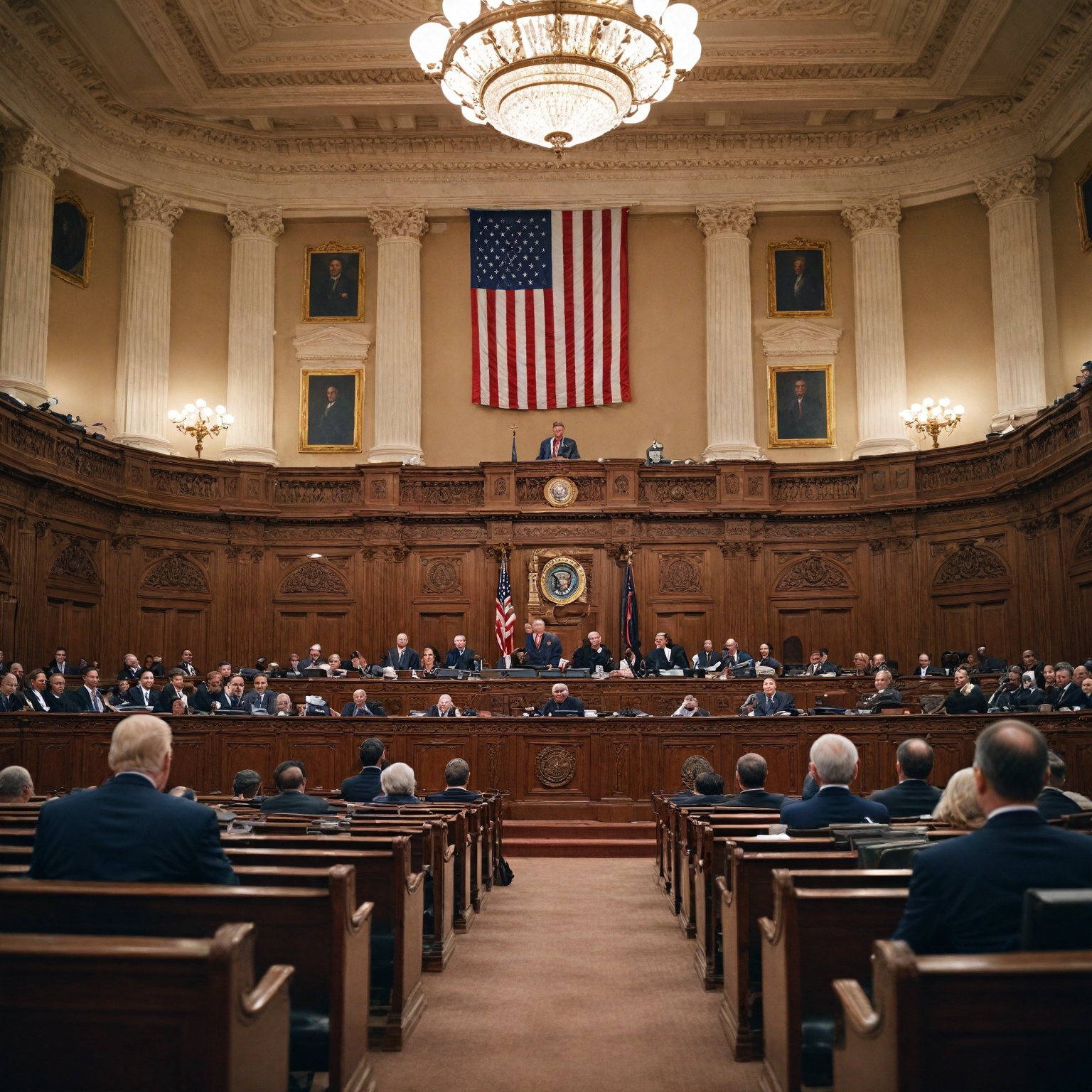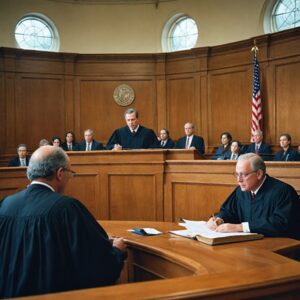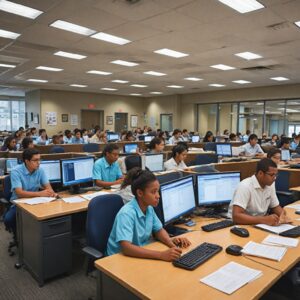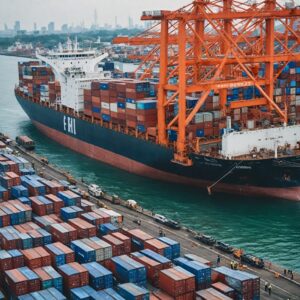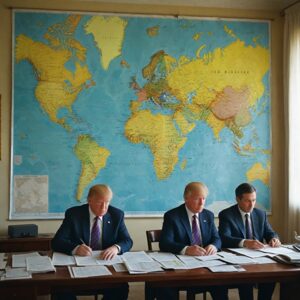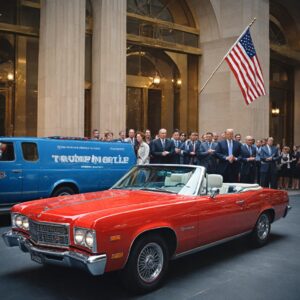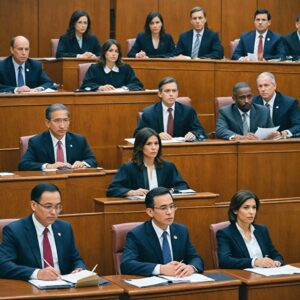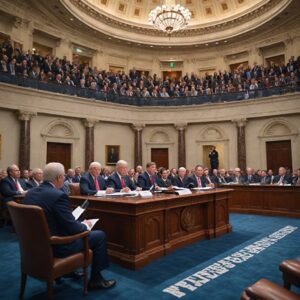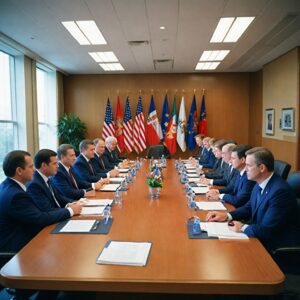Summary
During his second term as President of the United States, Donald Trump imposed sweeping tariffs on imported goods under the International Emergency Economic Powers Act (IEEPA), dramatically raising U.S. tariff rates to levels not seen in over a century. These tariffs, justified by Trump as necessary responses to a national economic emergency linked to persistent trade deficits, targeted a wide range of imports, including toys—a sector heavily reliant on Chinese manufacturing. The tariffs sparked significant economic disruption, with industry leaders warning of supply chain breakdowns, increased consumer prices, and threats to the viability of businesses operating on narrow margins.
In response, several companies, notably Illinois-based toy manufacturers Learning Resources and hand2mind, challenged the administration’s authority to impose such tariffs without explicit congressional approval. They argued that IEEPA does not empower the president to levy broad tariffs, especially on economic grounds, and sought expedited Supreme Court review of their case to resolve what they described as urgent and widespread harm to U.S. businesses and consumers. Lower courts delivered mixed rulings, with some blocking tariff enforcement temporarily, but the appellate process has prolonged resolution.
The Supreme Court ultimately declined the toy companies’ request to fast-track their challenge, opting instead to let the normal appellate review proceed. This decision underscored the Court’s customary deference to lower courts in complex statutory and constitutional disputes, even amid claims of significant economic impact. The refusal to intervene early leaves the question of the president’s tariff authority under IEEPA unresolved at the highest judicial level for the time being.
The controversy highlights a broader constitutional and political debate over the limits of executive power in trade policy, traditionally a congressional prerogative. Critics contend that Trump’s use of emergency powers to impose tariffs without legislative approval exceeds presidential authority and disrupts established checks and balances, while the administration maintains that confronting trade imbalances constitutes a legitimate national emergency justifying such measures. The legal battles and economic consequences have intensified scrutiny of U.S. trade policy, executive authority, and the interplay between courts and government in managing national economic emergencies.
Background
During his second presidency, Donald Trump enacted a series of steep protective tariffs on nearly all goods imported into the United States, dramatically increasing the average effective tariff rate from 2.5% in January 2025 to an estimated 27% by April 2025—the highest level in over a century. Following economic turmoil and policy rollbacks, the tariff rate was reduced to 15.6% by June 2025. Trump justified these tariffs by declaring a national economic emergency under the International Emergency Economic Powers Act (IEEPA), claiming trade deficits represented a critical threat to the U.S. economy. This approach allowed the administration to bypass congressional approval, a move that sparked widespread legal challenges questioning the president’s authority to impose such sweeping tariffs without explicit legislative authorization.
The tariffs significantly impacted numerous industries, with the toy sector among the hardest hit due to its heavy reliance on Chinese imports. China holds a dominant position in toy manufacturing, not only because of production capacity but also due to its ability to meet U.S. product safety standards—factors difficult to replicate elsewhere. As a result, tariffs of up to 145% threatened to push many toy companies out of the market, disrupt supply chains, and create severe merchandise shortages during critical sales periods such as the holiday season. Industry representatives warned that if manufacturers bore the full burden of tariffs, businesses with slim profit margins could fail, emphasizing the need for retailers, manufacturers, and consumers to share the cost. Retail prices were projected to rise by 10% to 15% if tariffs were fully passed through the supply chain.
The tariff policies triggered retaliatory measures from trading partners, including China and Mexico. China responded with tariffs up to 15% on key U.S. farm exports and expanded export controls against American companies. Mexico announced plans for retaliatory tariffs on U.S. goods as well, though the specifics remained unspecified. In response to diplomatic and economic pressures, Trump granted temporary exemptions on tariffs affecting Mexico and Canada. Despite these tensions, some economists suggested that Trump’s use of tariffs often served as a bargaining tool rather than a permanent trade strategy.
Legal challenges to the tariffs have focused on constitutional and statutory grounds, particularly the argument that imposing tariffs without clear congressional authorization constitutes an overreach of executive power. The courts have been cautious, with the U.S. Court of International Trade temporarily blocking some tariffs imposed under the IEEPA, ruling that the law does not authorize such universal duties. However, federal appeals courts have allowed tariffs to remain in effect pending further hearings. The Supreme Court typically hesitates to hear cases before appeals courts have ruled, reducing the likelihood of expedited review despite the urgency expressed by affected businesses.
Legal Challenge by Toy Companies
Two Illinois-based toy manufacturers, Learning Resources and hand2mind, initiated a legal challenge against President Trump’s tariffs imposed under the International Emergency Economic Powers Act (IEEPA), arguing that the president exceeded his statutory authority by imposing these levies without explicit congressional approval. The companies contended that IEEPA, originally enacted to grant the president limited emergency economic powers following the Trading with the Enemy Act of 1917, does not authorize the use of tariffs as a response to national emergencies, particularly in this context.
The companies sought to expedite their case by petitioning the Supreme Court to bypass the usual appellate process, specifically requesting “certiorari before judgment,” a rare procedure typically reserved for urgent national crises. Their appeal urged the Court to decide whether the emergency powers law provides the president with tariff authority, emphasizing the significant and widespread economic impact of the tariffs on American businesses and consumers. Despite their initial victory in a district court, the ruling was stayed pending appeals, and the companies expressed urgency in resolving the matter promptly, proposing the Supreme Court hear arguments as early as a special September session or the following term in October.
Legal experts and several courts have questioned the broad application of IEEPA to tariff imposition. While courts have historically upheld IEEPA’s broad executive powers in contexts such as sanctions and export controls, the use of IEEPA to impose tariffs has sparked considerable legal debate and challenges. A federal court ruled that President Trump’s justification for the tariffs—using them as leverage to compel other countries to combat drug trafficking—did not directly address the national emergency as required by IEEPA, thus invalidating the tariffs. Similarly, a separate district court blocked the president’s unilateral tariff authority, though this decision was temporarily paused during government appeals.
The toy companies’ lawsuit is distinct but parallels other legal efforts, including one filed in the U.S. Court of International Trade involving multiple companies and states that successfully sought to block the tariffs. Congressional responses to these controversies include proposed bills aiming to repeal Section 338 of the tariff law as of March 2025, reflecting ongoing legislative scrutiny of presidential tariff powers under IEEPA.
The Trump administration defended the tariffs by asserting that the emergency powers statute authorizes the president to regulate imports during national emergencies, citing the country’s trade deficit as justification. However, courts have increasingly challenged this interpretation, underscoring the constitutional allocation of tariff authority exclusively to Congress. The White House has publicly rejected judicial interventions, maintaining that decisions addressing national emergencies fall within the executive domain rather than that of the courts.
Supreme Court Involvement
Toy companies Learning Resources and hand2mind sought the Supreme Court’s swift intervention to challenge the legality of President Donald Trump’s tariffs imposed under the International Emergency Economic Powers Act (IEEPA). They argued that the IEEPA does not grant the president unilateral authority to impose broad tariffs and urged the justices to take up their case before the U.S. Court of Appeals for the District of Columbia Circuit could weigh in, requesting an expedited hearing possibly during a special September session or the next term in October.
Despite the companies’ plea for expedited review, the Supreme Court declined to fast-track the case, opting not to bypass intermediate appellate review. This decision meant that the legal challenge would continue through the usual judicial process rather than receive immediate Supreme Court attention. The Court’s reluctance aligns with its typical practice of awaiting appellate court decisions before taking up cases, reducing the likelihood of a rapid resolution as sought by Learning Resources.
Meanwhile, lower courts played a pivotal role in the dispute. A federal judge in Washington, D.C., ruled in favor of Learning Resources, stating that the IEEPA does not authorize the president to impose the tariffs and issued a preliminary injunction barring the administration from collecting tariffs from the toy companies, citing potential “significant and unrecoverable losses” to the businesses. The government appealed this ruling, leading to a temporary stay by the U.S. Court of Appeals for the Federal District, which paused the enforcement of the injunction while the legal proceedings continued.
A briefing schedule was set for the preliminary injunction motion, with the government’s response due by April 29, 2025, the plaintiff’s reply by May 6, 2025, and a hearing scheduled for May 13, 2025. Other related challenges against the tariffs have been filed in courts nationwide, but the case involving Learning Resources and hand2mind has remained the most prominent thus far.
The companies have emphasized the urgency of the matter, highlighting the extensive economic impact and uncertainty caused by the tariffs on businesses and consumers nationwide. They maintain that the administration’s expansive interpretation of emergency powers to justify the tariffs inflicts ongoing harm, underscoring their hope for judicial clarity on the limits of presidential authority under the IEEPA.
Detailed Timeline of Key Events
In early 2025, former President Donald Trump signaled his intention to utilize the International Emergency Economic Powers Act (IEEPA) to impose tariffs, initially focusing on Canada, Mexico, and China. On January 20, 2025, Trump signed an executive order directing cabinet secretaries to develop reports on trade practices and recommend tariffs by April 1, 2025.
On April 2, 2025, Trump declared a national emergency citing a “large and persistent US trade deficit,” enabling the invocation of IEEPA to impose a 10% tariff on all U.S. imports effective April 5, 2025. Additionally, he announced increased tariffs targeting 57 countries and territories, set to begin on April 9, 2025. These tariffs were to be applied on top of existing measures on Chinese imports, resulting in an effective tariff rate of 54% on Chinese goods after April 9, 2025.
Following the tariff announcements, several legal challenges emerged. Plaintiffs sought preliminary injunctions to block the so-called “Liberation Day” tariffs. The court established a briefing schedule with the government filing its response by April 29, 2025, the plaintiffs’ reply due by May 6, 2025, and a hearing scheduled for May 13, 2025. Multiple challenges were filed across federal courts nationwide, with the case brought by toy companies—the V.O.S. case—being the most prominent at that time.
A lower court had initially granted a ruling against the tariffs, but the U.S. Court of Appeals for the Federal District temporarily stayed that judgment, allowing the Trump administration to continue collecting tariffs while legal proceedings continued. The plaintiffs were given deadlines to respond to motions for a stay by June 5, 2025, with the government permitted to reply by June 9, 2025.
An appeals court was scheduled to hear arguments in late July 2025, with the company plaintiffs arguing that Trump had bypassed Congress by imposing tariffs under emergency powers. Although the companies won an early victory in a lower court, the order was paused as the appeals court considered a broader injunction against the tariffs. The appeals courts’ rulings are expected to be appealed to the Supreme Court, which is likely to take up one or both cases.
In an effort to expedite resolution, the toy companies filed a petition requesting the Supreme Court to review the matter before the appeals courts issued judgments. They also filed a motion to accelerate the Court’s consideration, which the Supreme Court denied, leaving open the possibility of future review on a standard timeline.
Throughout this period, the tariffs imposed under the IEEPA and other new tariffs threatened to impact more than $500 billion in goods imports, approximately 16% of U.S. imports, drawing significant attention from the business community and lawmakers alike. The evolving legal battles have underscored tensions between executive authority and congressional oversight in trade policy.
Analysis of Supreme Court Decision and Reasoning
The Supreme Court declined to fast-track the petition from toy manufacturers Learning Resources and hand2mind, which sought an expedited review of the legality of tariffs imposed under the International Emergency Economic Powers Act (IEEPA) by the Trump administration. The Court’s brief order did not provide an explanation of its reasoning, but this reluctance aligns with the Court’s typical practice of allowing lower courts to resolve issues before it intervenes.
In this case, an appeals court was scheduled to hear arguments in late July, and the Supreme Court generally prefers to await such intermediate appellate rulings before taking up related cases. The companies had requested the Court to bypass the usual appellate process due to the significant economic impact of the tariffs and the urgency they claimed in addressing the issue. Despite these arguments, the Court’s decision not to expedite suggests it did not find sufficient justification to disrupt the normal judicial progression.
The companies argued that the President lacked the statutory authority under IEEPA to impose tariffs without congressional approval and emphasized the nationwide economic repercussions and uncertainty caused by the tariffs. The Trump administration defended the tariffs by asserting that IEEPA grants the President the power to regulate imports during declared national emergencies and contended that the longstanding U.S. trade deficit constitutes such an emergency.
Legal experts have noted that petitions seeking review “before judgment”—that is, prior to appellate court rulings—are uncommon and generally disfavored unless there are exceptional circumstances. Historically, the Supreme Court had rarely used such a procedural mechanism until a recent increase in its use, underscoring the unusual nature of the toy companies’ request.
This decision fits within a broader context of legal challenges to the Trump administration’s tariffs, including a Federal Trade Court ruling that temporarily blocked certain tariffs under IEEPA, though that ruling is itself currently stayed pending appeal. By declining to expedite the case, the Supreme Court has left the issue to be further adjudicated in the lower courts, maintaining the conventional judicial process in complex and politically sensitive tariff litigation.
Economic and Industry Implications
The tariffs imposed under the Trump administration had far-reaching economic consequences, particularly for U.S. industries heavily reliant on Chinese imports. The toy industry was notably vulnerable due to China’s dominant role as the primary supplier of toys to the United States. This dominance stems not only from China’s vast production capacity but also from its unique ability to produce materials that comply with U.S. product safety standards, which are difficult to replicate elsewhere.
The imposition of tariffs, some reaching effective rates as high as 54% on Chinese goods by April 2025, significantly disrupted supply chains and increased costs for businesses. Toy manufacturers and importers faced severe challenges, with some companies fearing that earlier proposed tariff rates of up to 145% would have driven them out of the market entirely. The uncertainty surrounding tariff policies created a climate of “unremitting whiplash,” complicating inventory planning and risking product shortages during critical sales periods such as the holiday season.
Economic analyses predicted that the elimination of the U.S. de minimis exemption for Chinese goods could reduce Chinese export growth by 1.3 percentage points and slow overall GDP growth by 0.2 points, illustrating the broader economic impact of these trade measures. Federal Reserve Chairman Jerome Powell described the tariffs as having a significantly larger economic impact than initially expected.
Toy companies responded by lobbying for exemptions, emphasizing that their production expertise and compliance standards could not be easily duplicated outside China. Despite these efforts, many firms were forced to absorb increased costs or pass them along to consumers. Industry representatives warned that if manufacturers bore the full burden of the tariffs, many businesses with slim profit
Reactions and Commentary
The Supreme Court’s decision to reject the toy companies’ motion to fast-track their challenge to the tariffs imposed under the International Emergency Economic Powers Act (IEEPA) elicited a range of responses from industry leaders, legal experts, and economic commentators. Rick Woldenberg, chairman and CEO of Learning Resources and hand2mind, expressed disappointment but framed the ruling as “just another twist in the road,” emphasizing that the ultimate resolution would likely come from the Supreme Court itself. The companies behind the challenge argued that the tariffs and the associated uncertainty were having a “massive impact” on businesses nationwide, highlighting the urgency for swift judicial intervention.
Industry representatives stressed the profound effect tariffs have had on the toy sector, noting that the burden cannot fall solely on manufacturers without risking business viability. Foreman, a toymaker affected by the tariffs, warned that retail prices might need to rise by 10 to 15 percent if the costs are shared throughout the supply chain; otherwise, companies operating on thin margins could fail, particularly during critical sales periods such as the holiday season. The Toy Association has repeatedly lobbied to exempt the toy industry from these tariffs, arguing that China’s dominant position in toy production stems from its unique ability to meet U.S. product safety standards and its unparalleled manufacturing expertise, factors that are difficult to replicate domestically.
Legal scholars and former government officials have questioned the administration’s expansive use of IEEPA to justify tariff imposition without congressional approval. The U.S. Court of International Trade has ruled that the Constitution delegates tariff authority expressly to Congress, not the President, challenging the administration’s interpretation of IEEPA as conferring “unbounded tariff authority”. Nevertheless, the White House has dismissed such judicial decisions as overreach by unelected judges, asserting its commitment to using all executive powers to address what it deems national emergencies. This tension underscores ongoing debates over executive authority and the appropriate balance of power in trade policy.
Economists have also weighed in on the broader implications of the tariffs. Some argue that the tariffs, particularly those targeting Chinese goods, fail to address underlying trade imbalances and may harm the U.S. economy more than help it, as they are based on outdated conceptions of trade dynamics. Despite this, the threat of tariffs has been viewed by some as a strategic bargaining tool rather than a policy intended for full implementation. The cumulative effect of these factors has led to what industry representatives describe as “unremitting whiplash” caused by the administration’s aggressive and shifting tariff policies.
Related Legal Developments and Cases
The legal challenges to President Donald Trump’s tariffs have involved multiple courts and raised significant questions about the scope of presidential authority under the International Emergency Economic Powers Act (IEEPA) of 1977. The tariffs, a key part of Trump’s trade agenda, have drawn lawsuits from various businesses and states, with plaintiffs arguing that the president exceeded his authority by imposing high levies without Congressional approval.
Several toy companies, including Learning Resources and hand2mind, sought to expedite their challenge by requesting the Supreme Court to hear their case before the U.S. Court of Appeals for the District of Columbia Circuit had ruled—a rare procedure known as “certiorari before judgment.” This request was motivated by the companies’ view that the tariffs had a massive and immediate impact on businesses and consumers nationwide. They urged the Court to consider whether IEEPA authorizes the president to impose such tariffs and suggested that, if accepted, the case be argued during a special September session or the Court’s next term in October.
However, the Supreme Court declined to fast-track the case, adhering to its general reluctance to intervene before lower courts have issued rulings. An appeals court hearing on the matter was scheduled for late July, with the likelihood of appeals to the Supreme Court following those decisions. The ongoing litigation has resulted in temporary pauses of certain rulings and allowed Trump’s tariffs to remain in effect during the judicial review process.
Separate but related litigation has been brought before the U.S. Court of International Trade, where a coalition of U.S.-based companies and a group of states successfully obtained a permanent block on some tariffs imposed under IEEPA. Nonetheless, the Trump administration has maintained additional tariffs issued under different trade laws, which remain in effect.
These cases highlight the contentious nature of the executive branch’s use of emergency powers to enact significant trade policy changes, especially given that Congress traditionally holds the authority to approve tariffs. The controversies have sparked broader debates over the proper limits of presidential power in trade matters and the potential implications for U.S. economic and diplomatic relations.

